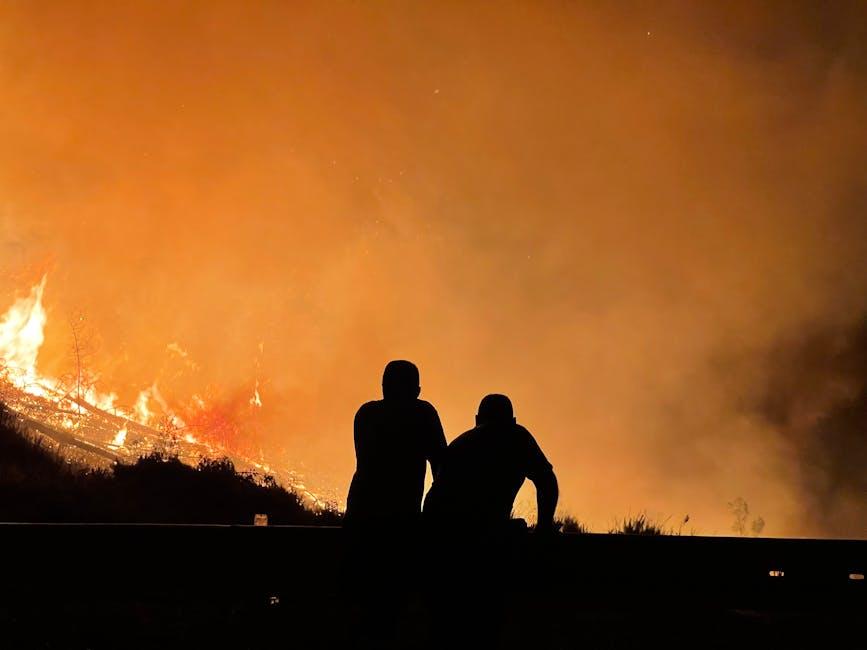In the realm of international travel, where unpredictability is often the only certainty, securing comprehensive travel insurance with robust emergency evacuation coverage has become an essential consideration for globetrotters. As the world reopens and travelers venture into increasingly remote and adventurous destinations, the demand for insurance policies that can offer swift and effective emergency evacuation services has surged. This article delves into the intricacies of travel insurance, specifically focusing on plans that provide superior emergency evacuation coverage. Through a meticulous analysis of the features, benefits, and limitations of various policies, we aim to guide travelers in making informed decisions that ensure their safety and peace of mind while exploring the world.
Understanding Emergency Evacuation Coverage in Travel Insurance
When selecting travel insurance, it’s crucial to delve into the specifics of emergency evacuation benefits. These benefits cover costs associated with urgent medical transportation to the nearest suitable medical facility, which can be a lifesaver in remote or high-risk areas. Coverage may include airlifts, medically equipped flights, or even repatriation back to your home country if necessary. Understanding the scope and limits of this coverage is essential to avoid unexpected expenses during a crisis.
- Comprehensive Coverage: Ensure that the policy covers a wide range of scenarios, from natural disasters to unexpected illness.
- Cost Limits: Check if there are any caps on evacuation expenses and whether these limits are sufficient given your travel destinations.
- Pre-authorization Requirements: Some insurers require pre-authorization before arranging evacuation services, which can be critical in emergency situations.
By evaluating these factors, travelers can choose a policy that provides robust protection, ensuring peace of mind no matter where their adventures take them.

Key Features to Look for in Emergency Evacuation Policies
When evaluating travel insurance plans, it’s crucial to scrutinize the emergency evacuation policies embedded within them. A comprehensive policy should cover a variety of scenarios and offer sufficient support to ensure your safety and well-being. Here are some key features to consider:
- Coverage Limits: Verify the maximum amount the policy will pay for evacuation services. Adequate coverage is essential, especially if you’re traveling to remote areas where evacuation costs can skyrocket.
- Types of Evacuations: Ensure the policy includes coverage for different types of evacuations, such as medical evacuations, non-medical evacuations due to political unrest, or natural disasters.
- Global Reach: Look for policies with a broad network of service providers worldwide, guaranteeing prompt assistance no matter where you are.
- 24/7 Assistance: Access to a 24/7 emergency helpline is vital, allowing you to quickly coordinate with insurers and medical professionals when time is of the essence.
- Repatriation: Check if the policy includes repatriation of remains or medical repatriation, which covers returning you home after receiving medical treatment abroad.
By meticulously examining these features, you can ensure your travel insurance offers robust emergency evacuation coverage, providing peace of mind during your adventures.

Comparing Top Travel Insurance Providers for Evacuation Benefits
When assessing travel insurance policies, emergency evacuation coverage is a critical factor to consider, especially for those venturing into remote or adventurous destinations. Allianz Global Assistance stands out for its comprehensive evacuation benefits, offering coverage for both medical and non-medical evacuations. Their policies often include access to a 24/7 assistance hotline, which can be crucial in coordinating swift evacuations. Additionally, Allianz provides the flexibility of covering costs for a travel companion to accompany you during evacuation, ensuring you’re not alone during a crisis.
World Nomads, known for catering to adventure travelers, offers robust evacuation benefits that are tailored to cover high-risk activities. Their policies not only include medical evacuation but also extend to cover repatriation and other transportation costs that may arise. Furthermore, World Nomads allows for customizable plans, enabling travelers to adjust coverage based on their specific needs and itinerary. When evaluating these providers, it’s essential to consider factors such as the scope of activities covered, geographic limitations, and the insurer’s track record in handling claims efficiently.

Expert Recommendations for Choosing the Best Evacuation Coverage
When evaluating travel insurance options, particularly for emergency evacuation, it’s essential to consider expert insights to ensure comprehensive protection. Experts advise prioritizing policies that offer robust evacuation services, including coverage for air ambulances and medically equipped flights. Medical transport costs can be exorbitant, especially from remote or underdeveloped regions, so it’s crucial that the policy covers these expenses in full.
Furthermore, experts recommend checking for 24/7 assistance services. This ensures that you’re able to access help at any time, which is vital during emergencies. Additionally, look for plans that offer coverage for pre-existing conditions, as these can often complicate evacuation procedures. Lastly, consider the destination’s healthcare infrastructure when selecting your policy, as this can affect the necessity and frequency of evacuations.

